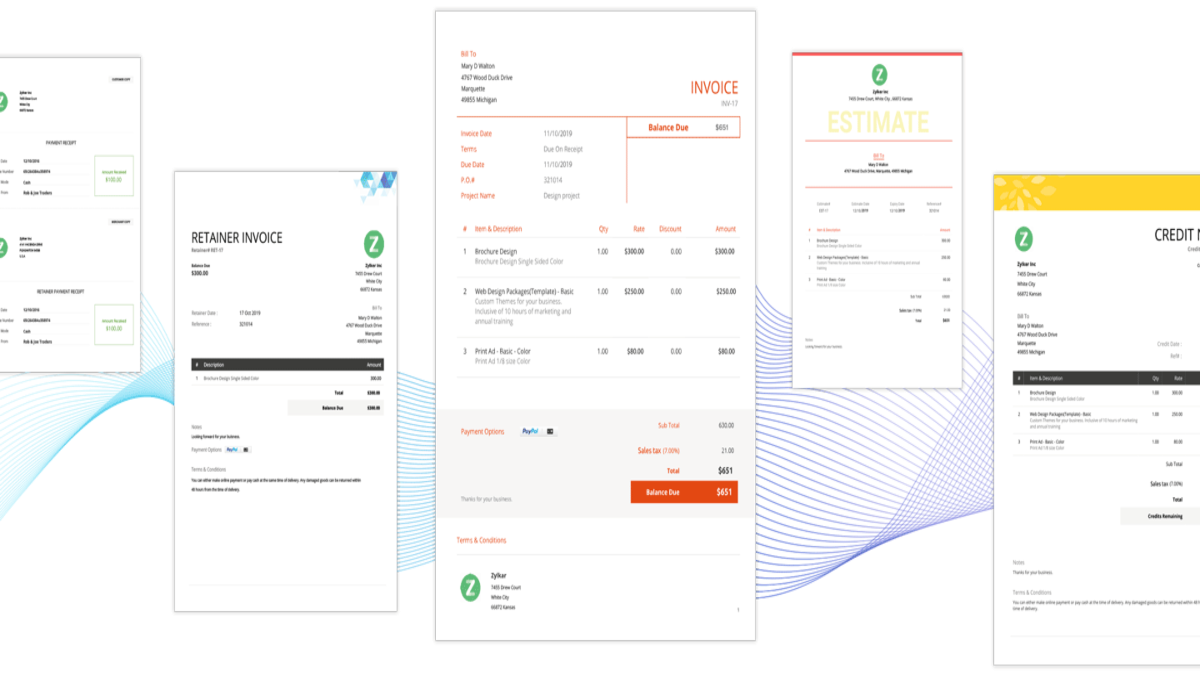Business
Learn and Know IP Addresses, Subnetting,and VLSM

IP Address
IP Address is the address assigned to the network and network equipment that uses the TCP/IP protocol. The IP address consists of 32 bits (biary digits or double numbers) binary numbers which are divided into 4 ockets (bytes) consisting of 8 bits. Each bit represents a decimal number ranging from 0 to 255.
The types of IP addresses consist of:
- Public IP
Highest public bit range address bit network address
class A 0 0 – 127* 8
class B 10 128 – 191 16
class C 110 192 – 223 24
class D 1110 224 – 239 28
- Private
This Private IP can be used freely but is not recognized on the global internet network. Because it is usually used on closed networks that are not connected to the internet, such as ATM computer networks.
10.0.0.0 – 10.255.255.255
172.16.0.0 – 172.31.255.255
192.168.0.0 – 192.168.255.255
Conclusion
1.0.0.0 – 126.0.0.0 : Class A.
127.0.0.0 : Loopback network.
128.0.0.0 – 191.255.0.0 : Class B.
192.0.0.0 – 223.255.255.0 : Class C.
224.0.0.0 = 240.0.0.0 : Class E, reserved.
3. IPv6
consists of 16 octets, for example:
A524:72D3:2C80:DD02:0029:EC7A:002B:EA73
Subnetting
A Network Administrator often requires network sharing from an IP Address that has been assigned by the Internet Service Provider (ISP). This is because the supply of IP addresses is currently very limited due to the proliferation of sites on the internet. The way to divide the network is called subneting and the result of subneting is called subnetwork. The steps for subnetting are as follows:
Example 2:
A company gets an IP address from an ISP 160.100.0.0/16, the company has 30 departments in total, and wants all departments to have access to the internet. Determine the network for each department?
Solution ;
1. Determine which class the IP is in? B
2. How many networks are needed?
with the formula 2n > network needed
25 > 30
3. Convert to binary
network-portion host-portion
10100000 01100100 00000000 00000000
11111111 11111111 00000000 00000000
- Take the host-portion bit according to the network needs, so that
network-portion host-portion
10100000 01100100 _ _ _ _ _ 000 00000000
11111111 11111111 1 1 1 1 1 000 00000000
note the third octet
_ _ _ _ _ 000
1 1 1 1 1 000
Method 1
By combining bits
00001 000 = 8
00010 000 = 16
00011 000 = 24
00100 000 = 32
00101 000 = 40
00110 000 = 48
……………
11111 000 = 248
Method 2
Reduce the subnet mask by 256
11111 000 = 248
256 – 248 = 8 then the subnetwork is a multiple of 8
No. Department of Subnetwork (255.255.248.0)
1 First 160.100.8.0
2 Second 160.100.16.0
3 Third 160.100.24.0
4 Fourth 160.100.32.0
5 Fifth 160.100.40.0
6 Sixth 160.100.48.0
7 Seventh 160.100.56.0
.. ………….
30 Thirty 160.100.248.0
Then
Network Broadcast Range-Hoat
160.100.8.0 160.100.15.255 160.100.8.1 – 160.100.15.254
160.100.16.0 160.100.23.255 160.100.16.1 – 160.100.23.254
160.100.24.0 160.100.31.255 160.100.24.1 – 160.100.31.254
160.100.32.0 160.100.39.255 160.100.31.254 160.100.32.0 160.100.39.255 160.100.32.1 – 160.100.39.254
160.100.40.0 160.100.47.255 160.100.40.1 – 160.100.47.254
160.100.48.0 160.100.55.255 160.100.48.1 – 160.100.55.254
160.100.56.0 160.100.63.255 160.100.56.1 – 160.100.63.254
160.100.64.0 160 100 .71.255 160.100.64.1 – 160.100.71.254
160.100.72.0 160.100.79.255 160.100.72.1 – 160.100.79.254
…… .. ………. ………….
160.100.248.0 160.100.255.255 160.100.248.1 – 160.100.255.254
VLSM (Variable Leg Subnet Mask)
The concept of subneting is indeed a solution in overcoming the number of IP addresses used. However, if you pay attention, there will be many subnets. More detailed explanation in the example:
Example 2:
A company that has 6 departments wants to divide its network, including:
1. Department A = 100 hosts
2. Department B = 57 hosts
3. Department C = 325 hosts
4. Department D = 9 hosts
5. Department E = 500 hosts
6. Department F = 25 hosts
IP Address given from ISP is 160.100.0.0/16
If we use ordinary subneting it will be easy to get but the results of subneting (such as example 1) will be wasted because the results of subneting are too many than the required number of hosts. Then we need VLSM calculations, namely:
- Sort by required hosts
1. Department E = 500 hosts
2. Department C = 325 hosts
3. Department A = 100 hosts
4. Department B = 57 hosts
5. Department F = 25 hosts
6. Department D = 9 hosts - Convert to binary
network-portion host-portion
10100000 01100100 00000000 00000000
11111111 11111111 00000000 00000000
If the subneting is taken from the network then the VLSM is taken from the host
l For 500 hosts
network-portion host-portion
10100000 01100100 00000000 00000000
11111111 11111111 00000000 00000000
For 500 hosts, 9 bits are taken from the host-portion because
2n-2 > number of hosts
The result is 160.100.0.0/23
Network Broadcast Range-Hoat
160.100.0.0/23 160.100.0.255 160.100.0.1 – 160.100.1.254
160.100.2.0/23 160.100.2.255 160.100.2.1 – 160.100.3.254
160.100.4.0/23 160.100.4.255 160.100.4.1 – 160.100.5.254
160.100.6.0/23 160.100.6.255 160.100.6.1 – 160.100.7.254
160.100.8.0/23 160.100.8.255 160.100.8.1 – 160.100.9.254
…….. ………. ………….
160.100.254.0/23 160.100.254.255 160.100.254.1 – 160.100.255.254
l For 325 hosts we can still use a subnet of 500 hosts because it is still in arena 29 and choose an unused subnet.
l For 100 hosts use 28 > 100 and take one of the previously unused subnets.
e.g. 160.100.2.0/24
network-portion host-portion
10100000 01100100 00000010 00000000
11111111 11111111 00000010 00000000
then
Network Broadcast Range-Hoat
160.100.2.0/24 160.100.2.255 160.100.2.1 – 160.100.2.254
160.100.3.0/24 160.100.3.255 160.100.3.1 – 160.100.3.254
l For 57 hosts use 26 >57 and take one of the previously unused subnets.
e.g. 160.100.3.0/24
network-portion host-portion
10100000 01100100 00000010 00000000
11111111 11111111 00000011 00000000
then
Network Broadcast Range-Hoat
160.100.3.0/26 160.100.3.91 160.100.3.1 – 160.100.3.90
160.100.3.64/26 160.100.3.63 160.100.3.65 – 160.100.3.126
160.100.3.128/26 160.100.3.127 160.100.3.129 – 160 100. 3.190
160.100.3.192/26 160.100.3.191 160.100.3.193 – 160.100.3.254
l For 25 hosts use 25 > 25 and take one of the previously unused subnets.
e.g. 160.100.3.192/25
network-portion host-portion
10100000 01100100 00000010 00000000
11111111 11111111 00000011 00000000
then
Network Broadcast Range-Hoat
160.100.3.192/27 160.100.3.223 160.100.3.193 – 160.100.3.222
160.100.3.224/27 160.100.3.255 160.100.3.225 – 160.100.3.254
l For 9 hosts use 24 > 16 and take one of the previously unused subnets.
e.g. 160.100.3.224/25
network-portion host-portion
10100000 01100100 00000010 00000000
11111111 11111111 00000011 00000000
then
Network Broadcast Range-Hoat
160.100.3.224/28 160.100.3.239 160.100.3.225 – 160.100.3.227
160.100.3.240/28 160.100.3.255 160.100.3.241 – 160.100.3.254
SUBNETTING ON IP ADDRESS CLASS B
First, the subnet mask that can be used for subnetting class B is as below. I deliberately separated it into two, the left and right blocks because each has a different technique, especially for the octet that is “played” based on the subnet block. The CIDR /17 to /24 method is exactly the same as the Class C subnetting, only the subnet blocks are inserted directly into the third octet, not like Class C is “played” in the fourth octet. While the CIDR /25 to /30 (multiple) of the subnet block we “play” in the fourth octet, but after the third octet is finished, we move forward (coeunter) from 0, 1, 2, 3, and so on.
Now let’s try two questions for both subnetting techniques for Class B. We start from using a subnetmask with a CIDR of /17 to /24. Example network address 172.16.0.0/18.
Analysis: 172.16.0.0 means class B, with Subnet Mask /18 means 11111111.11111111.110000000000000 (255.255.192.0).
Calculation:
- Number of Subnets = 2x, where x is the number of binaries 1 in the last 2 octets. So the number of subnets is 22 = 4 subnets
- Number of Hosts per Subnet = 2y – 2, where y is the reciprocal of x i.e. the number of 0 binaries in the last 2 octets. So the number of hosts per subnet is 214 – 2 = 16,382 hosts
- Block Subnet = 256 – 192 = 64. The next subnets are 64 + 64 = 128, and 128+64=192. So the complete subnets are 0, 64, 128, 192.
- Valid host and broadcast addresses?
Next we try another one for Class B, especially for those using the CIDR /25 to /30 subnetmask. Example network address 172.16.0.0/25.
Analysis: 172.16.0.0 means class B, with Subnet Mask /25 means 11111111.11111111.11111111.10000000 (255.255.255.128).
Calculation:
- Number of Subnets = 29 = 512 subnets
- Number of Hosts per Subnet = 27 – 2 = 126 hosts
- Subnet block = 256 – 128 = 128. So the complete is (0, 128)
- Valid host and broadcast addresses?
SUBNETTING ON IP ADDRESS CLASS A
If it is solid and understands correctly, we will continue to Class A. The concepts are all the same. The difference is in which OCTET we play the subnet blocks. If Class C is in the 4th (last) octet, class B is in the 3rd and 4th octet (last 2 octet), if Class A is in the 2nd, 3rd and 4th octet (last 3 octet). Then the subnet masks that can be used for subnetting class A are all subnet masks from CIDR /8 to /30.
We try to practice for the network address 10.0.0.0/16.
Analysis: 10.0.0.0 means class A, with Subnet Mask /16 means 111111111.11111111.000000000000000 (255.255.0.0).
Calculation:
- Number of Subnets = 28 = 256 subnets
- Number of Hosts per Subnet = 216 – 2 = 65534 hosts
- Block Subnet = 256 – 255 = 1. So the complete subnet is: 0.1,2,3,4, and so on.
- Valid host and broadcast addresses?
Note: All subnet calculations above assume that IP Subnet-Zeroes (and IP Subnet-Ones) are calculated by default. Todd Lamle’s latest version of the book as well as CCNA after 2005 have accommodated this IP Subnet-Zeroes (and IP Subnet-Ones) problem. CCNA pre-2005 does not include it by default (though in fact we can activate it with the command ip subnet-zeroes), so maybe in some books about CCNA and CNAP test questions, you still find the formula for calculating the number of subnets = 2x – 2
IP Address
IP Address is the address assigned to the network and network equipment that uses the TCP / IP protocol. IP addresses consist of 32 bit binary numbers which can be written as four decimal places separated by periods such as 192.16.10.01 or for example in wxyz format. IP addresses are the most widely used protocols for forwarding (routing) information on the network.
IP addresses have classes as in table 2.4.
Table 2.4. IP address
classes Class Range Network ID Host ID Default Subnet Mask
A 1-126 w xyz 255.0.0.0
B 128-191 wx yz 255.255.0.0
C 192-223 wxy z 255.255.255.0
note: there is still class D that is rarely used, and there is IPV6 that will be used if this IPV4 is not sufficient.
For example, there is an IP 192.168.0.100, so it includes a Class C IP Address
Subnetting
If an owner of a class B IP address, for example, requires more than one network ID, he must apply to Internic to get a new IP address. However, the supply of IP addresses is very limited due to the proliferation of sites on the internet.
To overcome this, a technique emerged to multiply the network ID from an existing network. This is called subnetting, in which a portion of the host ID is sacrificed for use in creating additional network IDs.
For example, in class B, the network ID is 130.200.0.0 with a subnet mask of 255.255.224.0 where the third octet is enclosed by 224. It can be calculated using the formula 256-224=32. then the subnet groups that can be used are multiples of 32, 64, 128, 160, and 192. Thus, the IP address groups that can be used are:
130.200.32.1 to 130.200.63.254
130.200.64.1 to 130.200.95.254
130.200.96.1 to 130.200.127.254
130.200.128.1 to 130.200.159.254
130.200.160.1 to 130.200.191.254
130.200.192.1 to 130.200.223.254
Or it will be easier with a good formulation in determining the subnet and the number of hosts per subnet. The number of subnets = 2n-2, n = the number of hidden bits
Number of hosts per subnet = 2N-2, N = number of bits not hidden
For example, suppose a subnet has a network address of 193.20.32.0 with a subnet mask of 255.255.255.224. So: The
number of subnets is 6, because from the network address 193.20.32.0 by paying attention to the number from the first octet, which is 193, it can be seen that it is in class C. By observing the subnetmask 255.255.255.224 or 11111111.11111111.1111111. 11100000 can be seen that the three bits of the host ID are shrouded, so we get n = 3 and get: number of subnets = 23-2 = 6.
As for the number of hosts per subnet is 30, this is obtained from 5 bits that are not hidden, then N = 5 and will be obtained: the number of hosts per subnet = 25-2 = 30.
The hidden bit is the bit that is represented by the number 1, while the bit that is not hidden is the bit that is represented by the number 0.
Business
Mueller Settlement Amazon: Navigating the Legal Landscape

Learn more about the intricacies of the Mueller Settlement Amazon, the consequences for Amazon legally and how it affected the company’s image. Discover the background, the thoughts of experts, and the steps Amazon took to win back customer confidence. Learn all about this retail giant’s struggles, triumphs, and plans for the future.
Introduction
Much attention has been focused on the Mueller settlement with Amazon in the intricate e-commerce industry. This article examines the origins, legal ramifications, and influence on Amazon’s reputation of this deal, among other complexities.
Understanding Mueller Investigation
What is Mueller Settlement Amazon?
A number of Amazon’s business activities were the subject of the inquiry that led to the Mueller settlement. To fully realise the implications of the settlement, it is vital to understand where this inquiry came from.
Significance of the Settlement
Understanding the settlement’s utmost significance in the business realm requires delving into the conclusions of the Mueller investigation and Amazon’s participation.
Legal Implications
Mueller Report Overview
A synopsis of the Mueller report explains the complex legal landscape that Amazon faced. To grasp the seriousness of the settlement, it is necessary to unravel the main conclusions and what they mean.
Amazon’s Legal Responses
In responding to the claims made in the Mueller report, Amazon’s legal staff was helpful. In this part, we will take a look at the methods Amazon used to protect its interests.
Settlement Details
Terms and Conditions
To further understand what Amazon was required to do, it is helpful to review the settlement agreement’s terms and conditions. Understanding the breadth of the settlement requires uncovering the financial ramifications for Amazon.
Impact on Amazon’s Reputation
Public Perception
Public opinion may have just as much of an effect as a court of law. It is instructive to compare popular opinion of Amazon before, during, and after the settlement.
Media Coverage
The media’s coverage of the Mueller settlement was essential in establishing its narrative. The impact on Amazon’s reputation as a result of the media attention is examined in this section.
Amazon’s Response Strategy
Communication Tactics
It takes finesse to communicate at a settlement. To make sense of what happened next, you had to know how Amazon strategically conveyed its position.
Changes Post Settlement
After the payment, Amazon made certain adjustments to fix its reputation. Taking a look at these adjustments shows how seriously the organisation takes the idea of learning from the mistake.
Lessons Learned
Corporate Responsibility
Many people started talking about corporate accountability after the Mueller deal. In this part, we’ll look at what other companies, including Amazon, have learnt.
Future Implications for Companies
Companies may learn a lot about how to deal with future problems like this by looking at the bigger picture of how the settlement affected their actions.
Expert Opinions
Legal Experts’ Take
Views on the Mueller settlement were expressed by legal professionals. Gaining insight into their viewpoints enriches the examination.
Business Analysts’ Perspectives
Analysts from the business world provide light on the potential financial consequences. Gaining insight into their viewpoints allows for a more complete picture to be painted.
Mueller Settlement Amazon: A Timeline
Key Events
To make sense of what’s happening, it’s helpful to go over the major points of the Mueller deal in chronological order.
Milestones in the Settlement
Readers may easily follow the events that had place by locating key points in the settlement chronology.
Consumer Trust Regained
Measures Taken by Amazon
Amazon did some things to win back the confidence of its customers. By breaking down these steps, we can see how seriously the business takes its consumers’ needs.
Customer Feedback
It is critical to pay close attention to what customers have to say. To gauge the success of Amazon’s campaigns, it is helpful to examine consumer comments made after the settlement.
Positive Outcomes
Changes in Corporate Practices
As a result of the Mueller settlement, Amazon revised and updated certain of its business policies. Looking at these developments highlights the benefits of the settlement.
Industry-wide Impact
Beyond Amazon, the settlement’s effects were felt. The effects of the settlement on the industry as a whole are discussed in this section.
Challenges Faced
Internal Struggles
Both during and after the settlement, Amazon encountered difficulties internally. The larger story gains depth from an appreciation of these challenges.
External Backlash
Amazon faced criticism from other sources. Managing a company’s reputation after a settlement is complicated, but it becomes clearer when you look at the external issues.
Success Stories Post Settlement
Amazon’s Growth
The fact that Amazon has continued to grow since the settlement shows how resilient the corporation is. A positive outlook might be gained by delving into this growth tale.
Positive Repercussions
One way to look at the bright side of things is to consider the good things that have come out of the settlement.
The Future of Amazon
Sustainability Efforts
After the settlement, Amazon made sustainability an even bigger priority. By delving into these initiatives, we can better understand the firm’s dedication to ethical business practices.
Ongoing Commitment
The commitment of Amazon to learning from the settlement and making wise adjustments will determine its future.
Conclusion
Last but not least, the path to a Mueller deal with Amazon has been one of profound change. To better overcome obstacles, organisations would do well to understand the legal, reputational, and operational ramifications.
FAQs
Is the Mueller settlement a setback for Amazon’s growth?
Amazon overcame obstacles presented by the settlement and continued to develop as a result.
How did the public react to the settlement?
Both proponents and detractors of the idea voiced differing views in response to the public outcry.
Were there long-term consequences for Amazon?
Improvements in corporate responsibility and shifts in business practices were among the long-term effects.
Business
10 Top Photo Tiles, Wall Art, and Canvas Prints Companies

Introduction
In today’s digital age, we capture countless moments with our cameras and smartphones, but often these memories remain trapped in the digital realm. Fortunately, there are companies that specialize in turning your cherished photos into stunning pieces of art that you can proudly display in your home. From photo tiles to canvas prints, these companies offer a wide range of options to transform your memories into beautiful decor. In this article, we’ll explore the top 10 companies that excel in this field, with special mention to Wallpics, a standout choice.
-
Shutterfly
Shutterfly has long been a household name in the world of personalized photo products. They offer an array of options, including canvas prints, framed prints, and acrylic prints, allowing you to transform your photos into elegant wall art. Shutterfly’s user-friendly website and customization tools make it easy to create personalized pieces that suit your style.
-
CanvasPop
CanvasPop is known for its high-quality canvas prints. They use premium materials and advanced printing techniques to ensure your photos are reproduced with vivid colors and sharp details. CanvasPop offers a range of customization options, allowing you to choose the perfect size and frame to match your decor.
-
Mixtiles
Mixtiles specializes in photo tiles, making it easy to create a unique wall display. Their peel-and-stick tiles are not only convenient to install but also offer a modern and sleek look. You can rearrange them easily, ensuring your wall art is always fresh and appealing.
-
Printique
Formerly known as AdoramaPix, Printique is a trusted name in the world of photography. They offer a variety of printing options, including canvas prints and metal prints, all of which are known for their exceptional quality. With Printique, you can be confident that your photos will be turned into beautiful works of art.
-
Easy Canvas Prints
As the name suggests, Easy Canvas Prints makes the process of creating canvas prints a breeze. Their user-friendly website guides you through the customization process, allowing you to choose from various sizes, frames, and even image enhancements. The result is stunning canvas art that’s delivered to your doorstep.
-
CanvasDiscount
CanvasDiscount is known for its affordable canvas prints without compromising on quality. They frequently run promotions and offer competitive pricing, making it a budget-friendly option for transforming your photos into canvas art. Despite the lower prices, the quality of their prints remains impressive.
-
Nations Photo Lab
Nations Photo Lab is a professional-grade photo printing service that offers a wide range of products, including canvas prints and metal prints. They are known for their attention to detail and color accuracy, ensuring your photos are faithfully reproduced. Nations Photo Lab is a popular choice among photographers and art enthusiasts.
-
Great Big Canvas
Great Big Canvas specializes in large-format art prints that can make a bold statement in your home. Their collection includes a wide range of styles, from contemporary to classic, ensuring there’s something for everyone. Whether you want to showcase your own photos or explore their vast library of artwork, Great Big Canvas has you covered.
-
Fracture
Fracture takes a unique approach to photo printing by directly printing your images on glass. The result is a sleek and modern look that enhances the vibrancy of your photos. Their minimalist design and easy-to-hang system make it simple to transform your photos into eye-catching wall art.
-
Wallpics
Last but not least, Wallpics deserves a special mention on this list. Wallpics offers a distinctive and creative way to display your photos as wall art. They specialize in photo tiles that can be easily arranged and rearranged on your wall. With Wallpics, you have the flexibility to create your own unique photo collages and arrangements, adding a personal touch to your decor.
Conclusion
Turning your favorite photos into beautiful wall art has never been easier, thanks to the top-notch companies mentioned in this article. From canvas prints to photo tiles, these companies offer a variety of options to suit your style and budget. Whether you’re looking for professional-grade quality or a budget-friendly solution, you can trust these companies to transform your cherished memories into stunning pieces of art. And with Wallpics’ creative approach to photo tiles, you have the freedom to design your own unique wall display that tells your story in a truly personalized way. So, don’t let your precious memories stay hidden on your devices; turn them into beautiful art pieces that you can enjoy every day.
Business
Top 8 Invoice Generator Software for Freelancers, Small Businesses, and Professional Contractors

Introduction:
In today’s rapidly evolving business world, the demand for efficient tools to manage financial transactions and streamline operations has never been greater. Freelancers, small businesses, and professional contractors all require effective invoice generator software to create professional invoices and ensure timely payments. In this article, we present a new list of the top 8 invoice generator software solutions, with a focus on Zintego, an innovative invoicing tool that can revolutionize your billing process.
-
QuickBooks Online:
QuickBooks Online by Intuit is a highly popular cloud-based accounting software suitable for freelancers and small businesses. It offers a robust invoicing module with customizable templates, expense tracking, and online payment capabilities. QuickBooks Online also integrates seamlessly with various third-party applications.
-
Xero:
Xero is another cloud-based accounting software that excels in invoicing. It provides customizable invoices, expense management, and multi-currency support. Xero’s intuitive interface and automation features make it an excellent choice for small businesses and professional contractors.
-
FreshBooks:
FreshBooks is a user-friendly invoicing and accounting software tailored for freelancers and small businesses. It offers automatic payment reminders, expense tracking, and client management. FreshBooks also provides a time tracking feature and supports multiple payment gateways.
-
Zoho Invoice:
Zoho Invoice, part of the Zoho suite of business software, offers comprehensive invoicing features. Users can access customizable templates, time tracking, expense management, and online payment processing. Zoho Invoice integrates seamlessly with other Zoho applications, providing a holistic business management solution.
-
Wave:
Wave is a free invoicing and accounting software ideal for freelancers and small businesses on a tight budget. Despite its cost-free nature, Wave offers essential features such as invoice customization, expense tracking, and secure payment processing. Additional paid add-ons are available for advanced functionality.
-
Hiveage:
Hiveage is an all-in-one invoicing and billing solution designed for freelancers, small businesses, and professional contractors. It offers customizable invoicing templates, expense tracking, and time billing. Hiveage also includes robust reporting features to help users gain insights into their financial performance.
-
Invoice2go:
Invoice2go is a straightforward invoicing software that caters to the needs of small businesses and professional contractors. It provides customizable invoice templates, expense tracking, and online payment acceptance. Invoice2go also offers a mobile app for on-the-go invoicing.
-
Zintego – A Game-Changing Invoice Generator:
Among the top invoicing software options, Zintego deserves special attention. Zintego has rapidly gained recognition for its innovative approach to invoicing. Here are some standout features that make Zintego a valuable addition to this list:
- Smart Automation: Zintego leverages smart automation to simplify the invoicing process. It can automatically generate recurring invoices, saving time and ensuring consistent billing for retainer clients or subscription-based services.
- Customizable Templates: Zintego provides a range of customizable invoice templates, enabling users to create invoices that match their brand identity. You can easily add your logo, adjust colors, and customize the layout to your liking.
- Expense Tracking: The software includes expense tracking features, allowing users to monitor business expenditures effortlessly. Expenses can be categorized, receipts attached, and detailed expense reports generated for better financial management.
- Multi-Currency Support: Zintego understands the needs of international businesses and offers multi-currency support, making it easy to invoice clients in their preferred currency.
- Payment Integration: Zintego integrates seamlessly with popular payment gateways, facilitating online payments and reducing payment delays.
- Client Management: Zintego assists in managing client information, providing quick access to contact details, transaction history, and outstanding balances. This feature is invaluable for maintaining strong client relationships.
- Mobile Accessibility: With the Zintego mobile app, users can create and send invoices from anywhere, ensuring flexibility and efficiency in their invoicing process.
- Data Security: Zintego prioritizes data security by employing encryption and secure protocols to protect financial information, ensuring the utmost confidentiality for users and their clients.
Conclusion:
Invoicing plays a pivotal role in the success of freelancers, small businesses, and professional contractors. The right invoice generator software can simplify invoicing, enhance professionalism, and boost cash flow. While established solutions like QuickBooks Online, Xero, and FreshBooks offer robust features, Zintego’s innovative approach and user-friendly interface make it a compelling choice.
As businesses continue to evolve, having a reliable invoicing tool like Zintego can make a significant difference in managing finances efficiently and nurturing client relationships. Explore these options to find the software that best fits your invoicing needs and helps your business thrive in today’s competitive landscape.
-

 Social Media10 months ago
Social Media10 months agoWho is Rouba Saadeh?
-

 Apps10 months ago
Apps10 months agoWhy is Everyone Talking About Hindi Keyboards?
-

 Social Media10 months ago
Social Media10 months agoMati Marroni Instagram Wiki (Model’s Age, Net Worth, Body Measurements, Marriage)
-

 Entertainment10 months ago
Entertainment10 months ago12 Online Streaming Sites that Serve as Best Alternatives to CouchTuner
-

 Apps10 months ago
Apps10 months agoThings you need to know about Marathi keyboard today
-

 Apps10 months ago
Apps10 months agoStuck with Your default Bangla keyboard? Isn’t it time for a change?
-

 Entertainment10 months ago
Entertainment10 months agoMovierulz Website: Movierulzz 2021 Latest Movies on Movierulz.com
-

 Social Media10 months ago
Social Media10 months agoBrooke Daniells: Everything About Catherine Bell’s Partner
